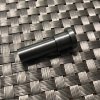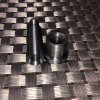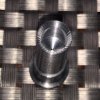Tomme boy
Well-Known Member
I was thinking about sizing gas checked bullets base first in a Lee Die. Some bullets you can not do this because they are pointed. I was thinking about the cup nose top punch from Keith. Use the Lee die but have the pusher stem made so it would take Keith's top punches or other punches so you could seat and crimp gas checks base first.
I know the top punch would have to be the same diameter as the die you are sizing for so you would need multiple ones for different cal. Or just make a universal one in each cal with a blank hole so you could fill with epoxy for the bullet you are using. Then insert it just like the stem that Lee has in your press.
Anyone want to make me one for 9mm diameter? I could drill a hole in the stems I have but they would not be anywhere near center. And that is a must.
I know the top punch would have to be the same diameter as the die you are sizing for so you would need multiple ones for different cal. Or just make a universal one in each cal with a blank hole so you could fill with epoxy for the bullet you are using. Then insert it just like the stem that Lee has in your press.
Anyone want to make me one for 9mm diameter? I could drill a hole in the stems I have but they would not be anywhere near center. And that is a must.





